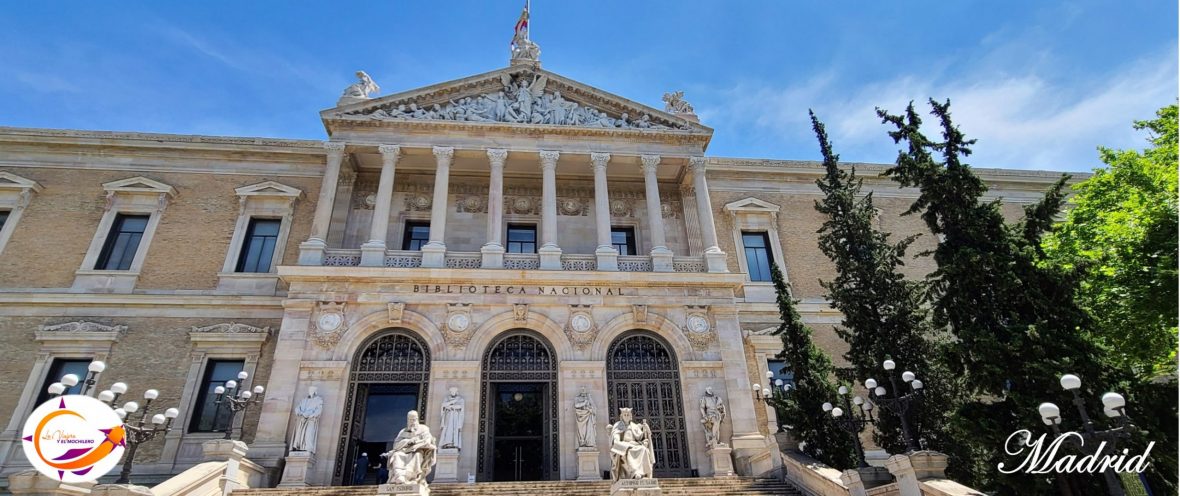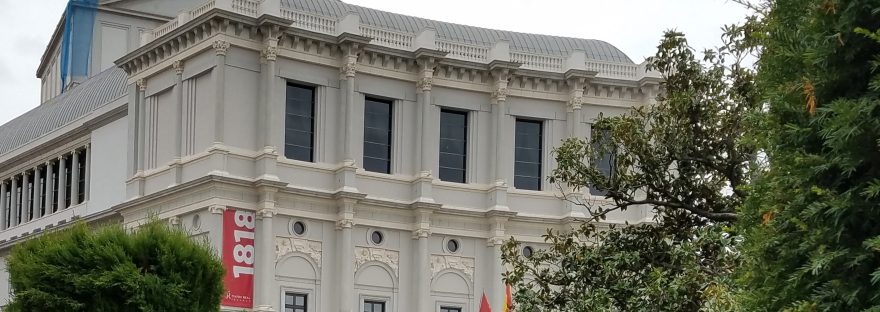When making your way to take the Metro Opera Station in Madrid’s Isabel II Square, or strolling through the gardens of the Plaza of the Orient, there is one building that stands out very elegantly, it is the Royal Theater. It is the first institution for the performing arts in Spain, the National opera house and considered one of the main opera coliseums internationally. Its program ranges from its renowned opera productions, ballet, dance, flamenco, concerts, to entertainment and shows for the whole family.
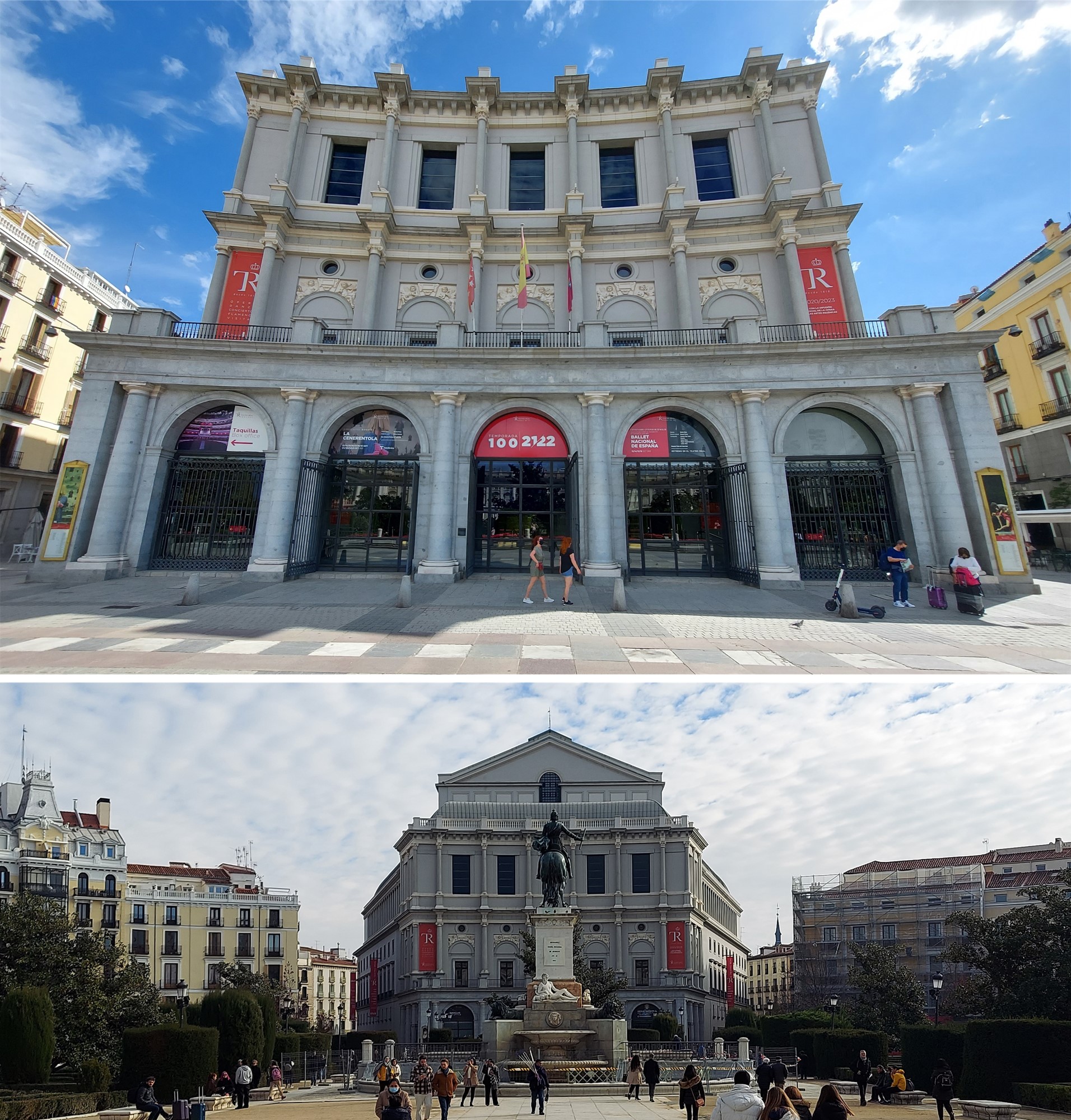
The history of the Royal Theater began when King Ferdinand VII ordered its construction, and although the first stone was laid on April 23, 1818, the works were completed thirty-two years later, in 1850. Under the reign of Isabel II and during the following 75 years, the Royal Theater became one of the main European lyric coliseums. In October 1925, a collapse caused its provisional closure, which lasted for 41 years. In 1966, the Royal Theater was reopened; converted into an auditorium and home to the Royal Conservatory of Music and School of Dramatic Art.
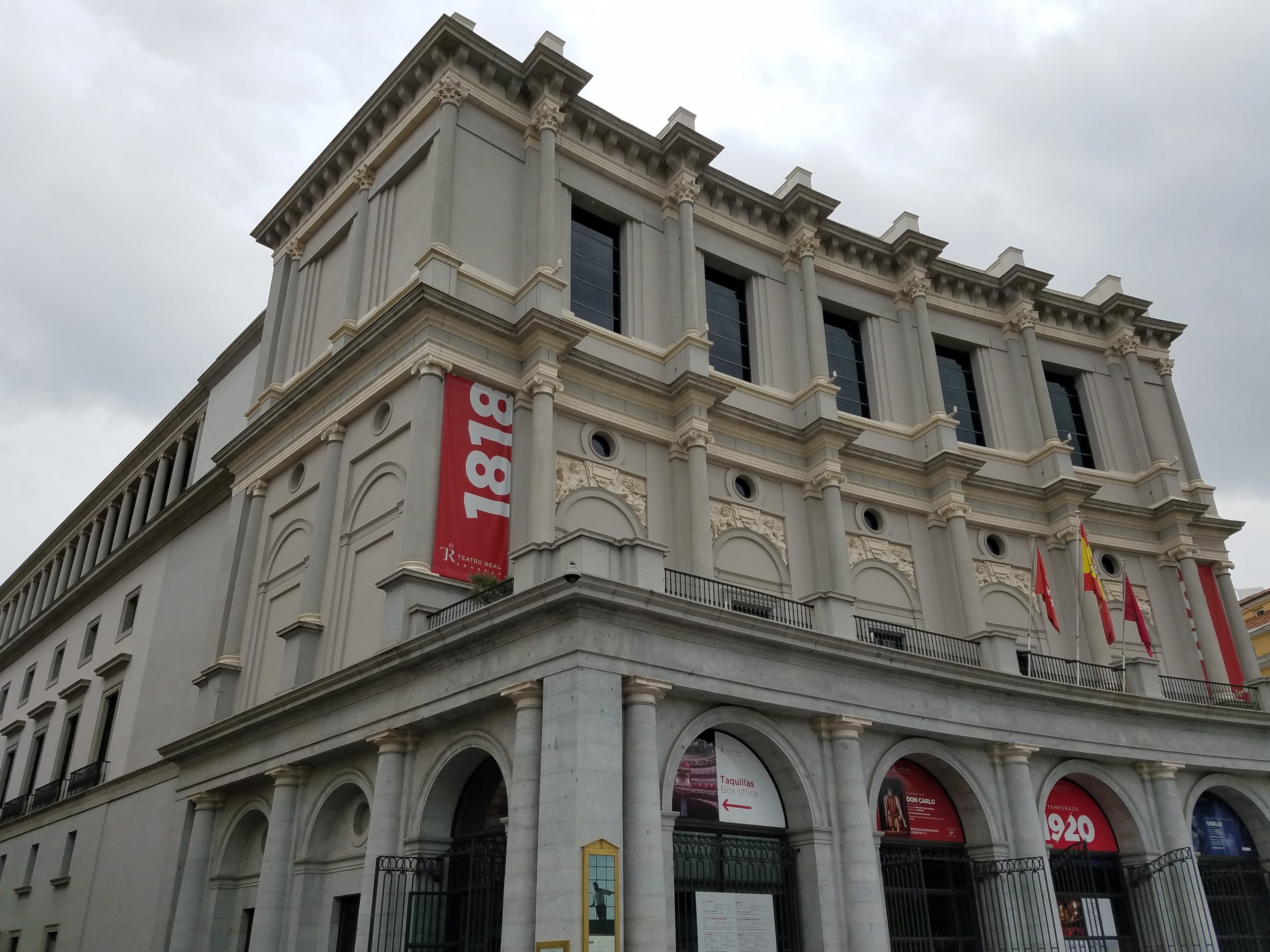
However, the capital of Spain needed an opera house on a par with the best in the world and after 7 years of renovation work, the Royal Theater was inaugurated anew on October 11, 1997, in a ceremony presided over by the King and Queen of Spain. A unique building due its design; an irregular hexagon with one of its curved sides, which is the main facade facing the Plaza of Orient.
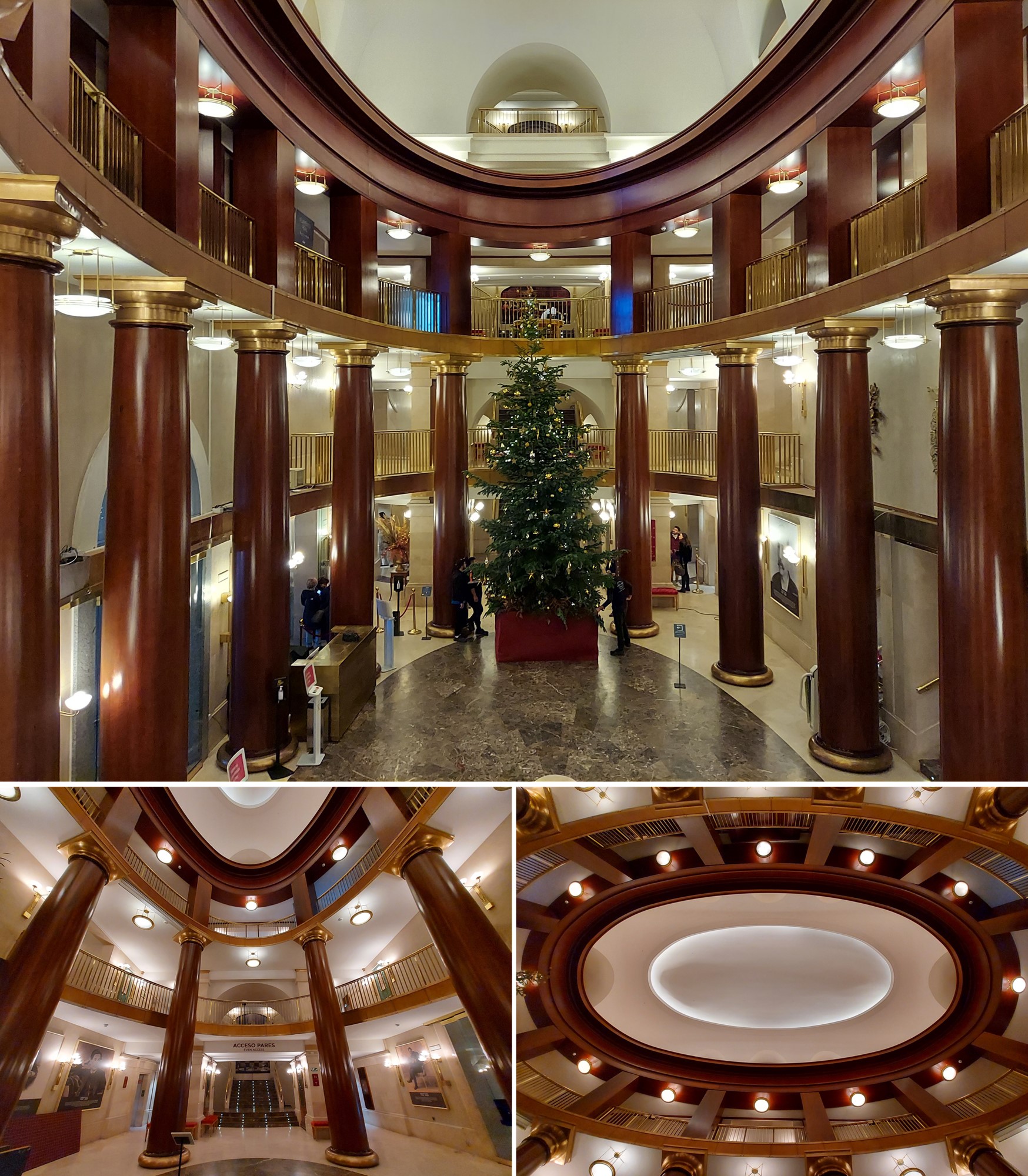
The entry to the main lobby, or better known as the Foyer, an elliptical space, where its columns in cedar wood from Lebanon stand out. On days when performances are offered, this space is one of the main meeting spots for opera lovers. The tour of the Royal Theater starts by scanning the QR code provided after the purchase of tickets, which allows you to listen or read the entire history of this great theater.
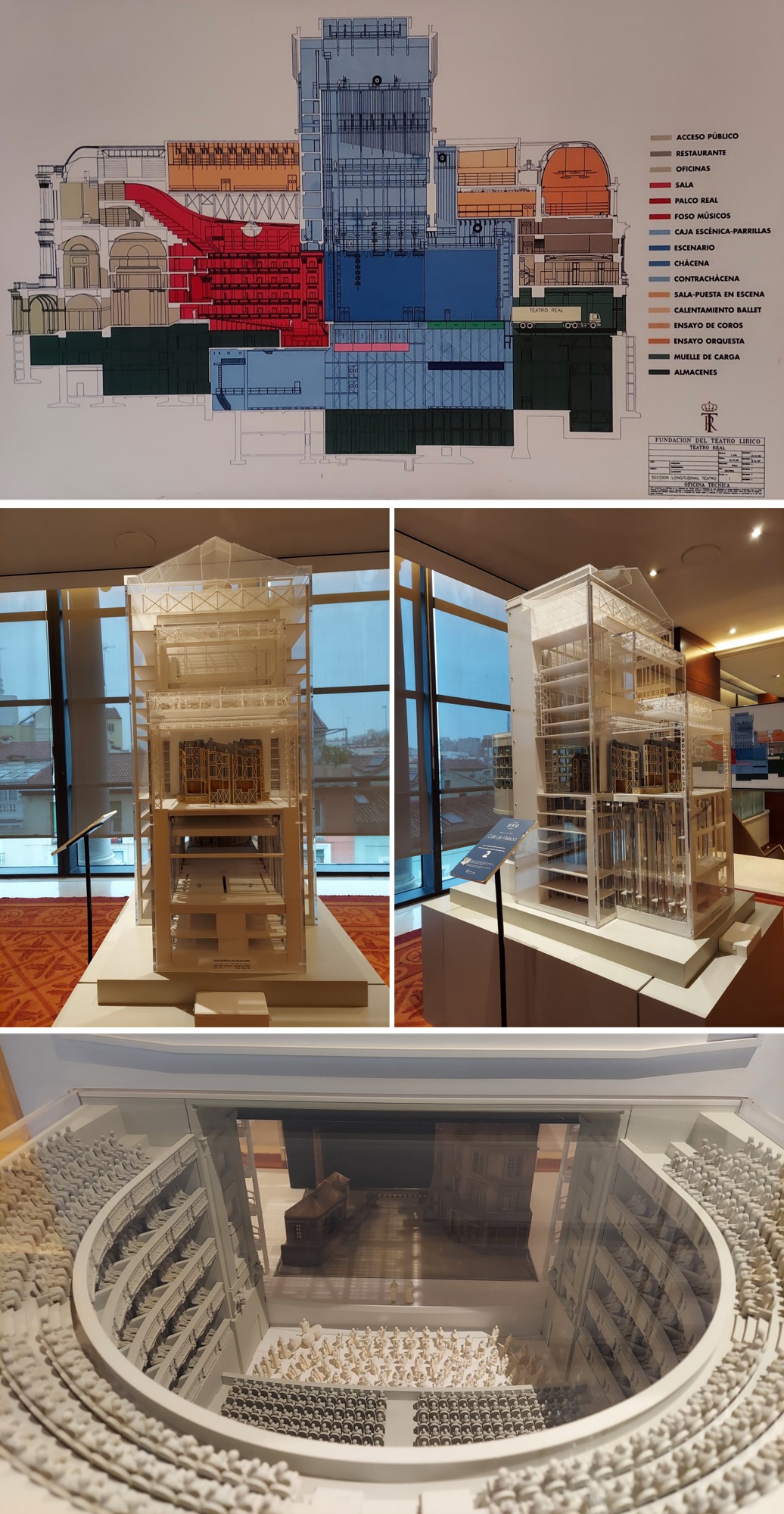
The next thing to observe is the model of the Royal Theater, a very detailed scale reproduction. Behind the curtain is one of the most impressive elements of the building, the Scenic Box. It has the most advanced technology and, thanks to a system of superimposed platforms, allows worked on several scenography’s simultaneously and interchanged in record time. The Scenic Box of the Royal Theater has been recognized as the jewel of the theater with its 1,472 square meters. In the depth of the space occupied by the box, it fits the “Telefónica” building which is found on Madrid’s Gran Vía. It must be taken into account that the Royal Theater is developed mainly vertically, consisting of fourteen floors; eight of them underground.
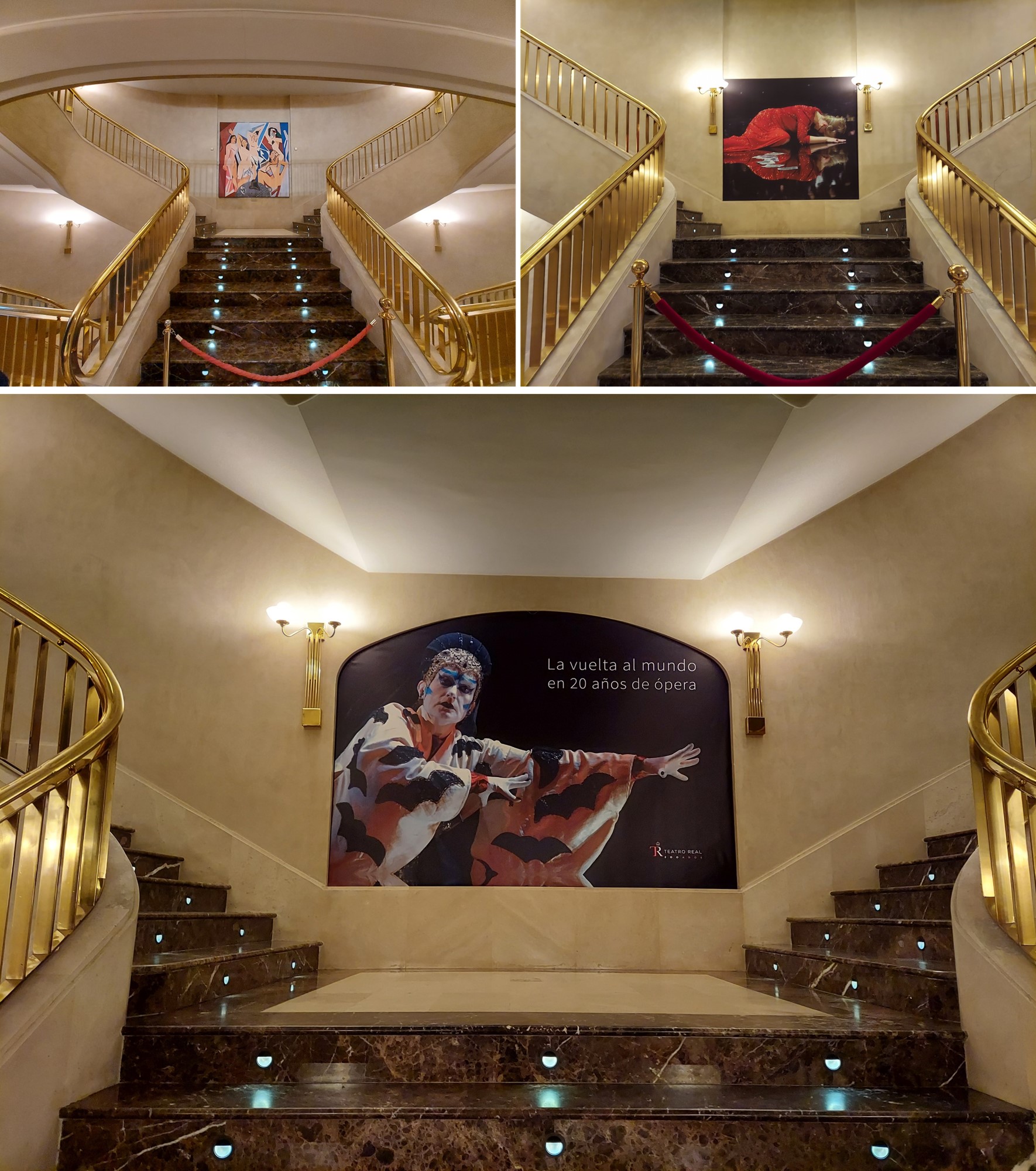
Although access to the stairs leading to the different levels of the Royal Theater were not open during our visit, we did get a glimpse of the artwork on display at the rest area up the stairs. They definitely do not go unnoticed.
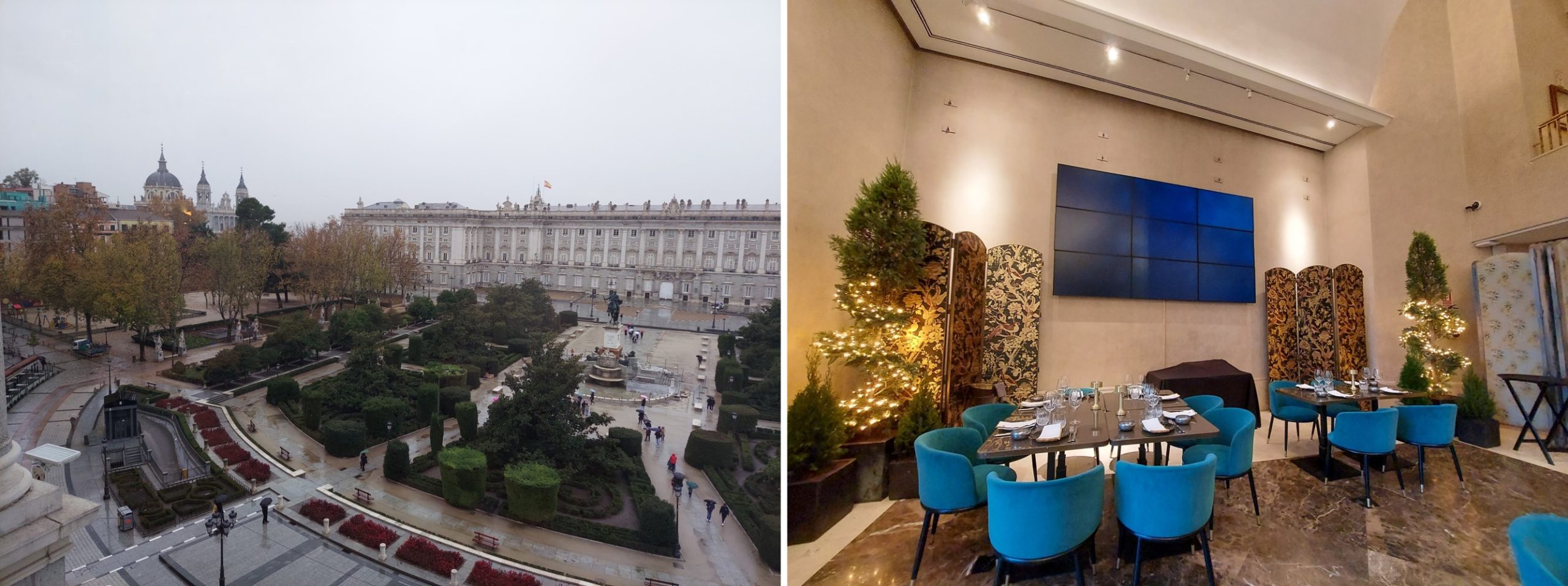
The “Café Palacio”, is a spacious two-level area, located on the sixth floor. Its decoration is exquisite and with the interest of promoting other artistic manifestations, here are exhibited works of Spanish artists of the twentieth century, on loan from the Reina Sofia Museum.
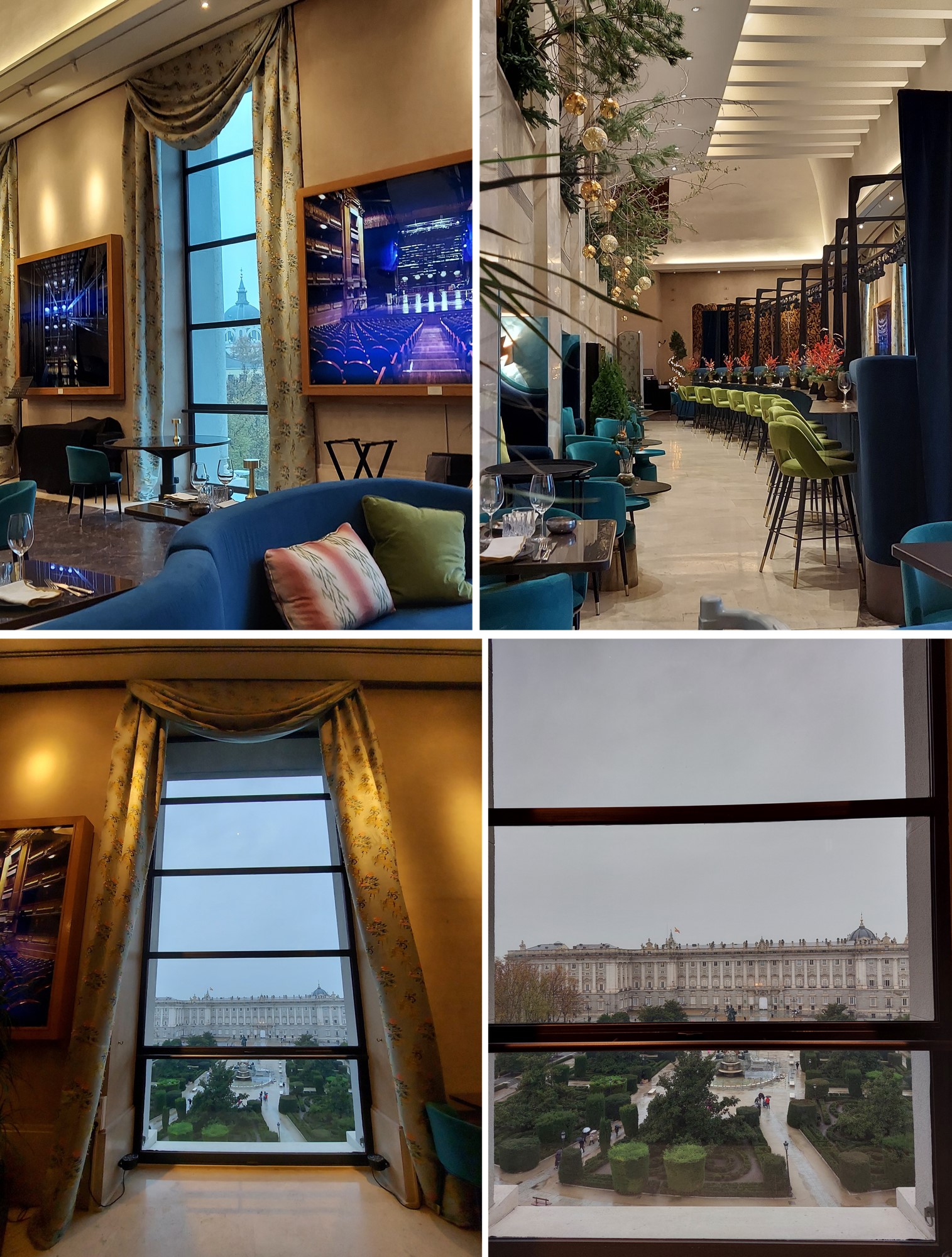
In this room also reveals an impressive set of four photographs of the scenic box of the Royal Theater whose author is José Manuel Ballester. Another attraction of the “Café Palacio” is its five large windows. From them one can enjoy a stupendous view of the Royal Palace of Madrid.
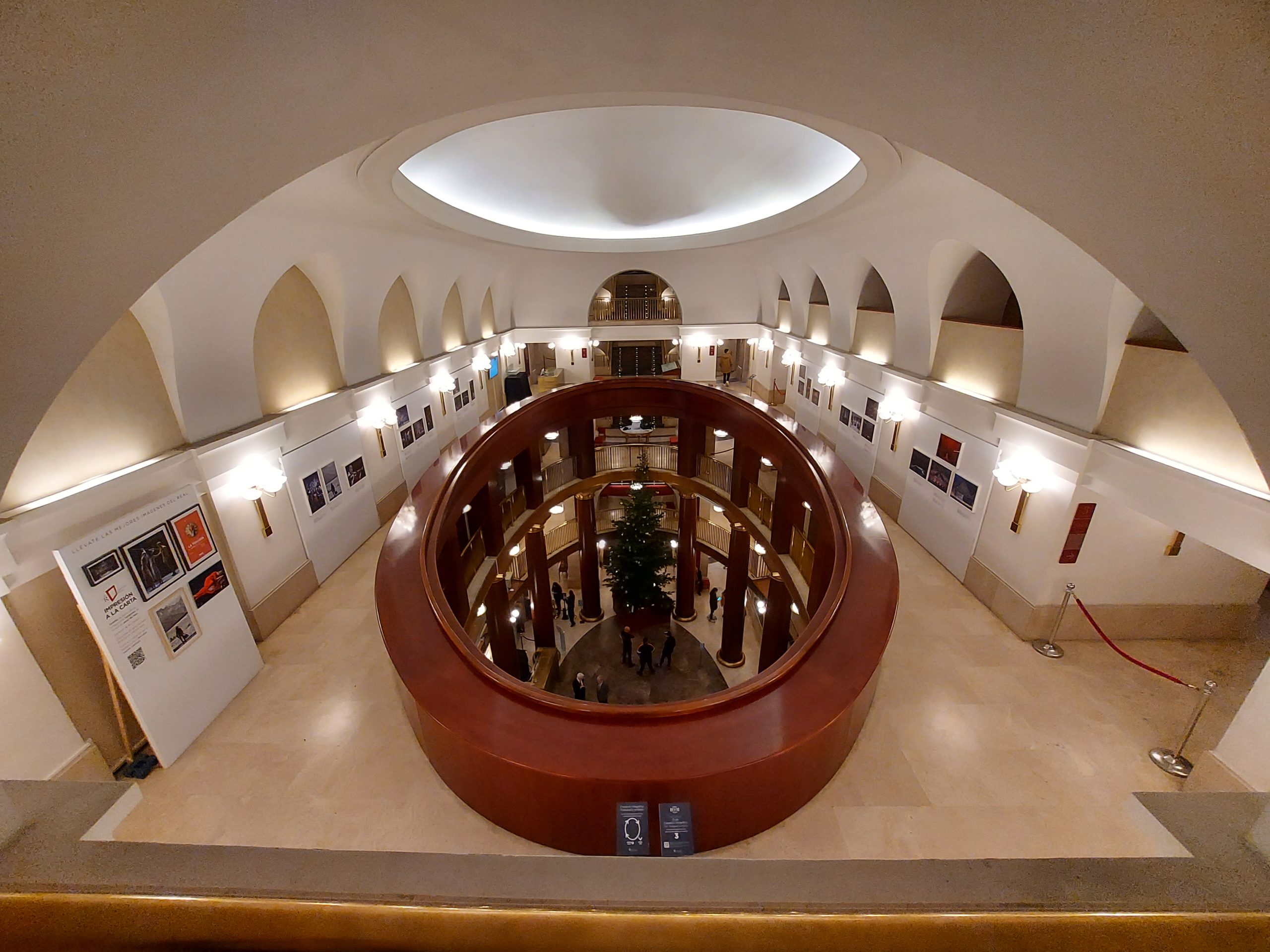
Located on the third floor of the Royal Theater, is what is called the “Óvalo”. This space is very crowded during the breaks and the moments before the performances. The large wooden railing allows you to look out and observe from another perspective, the Foyer and its great colonnade. Around the “Óvalo” you can enjoy an exhibition of photographs showing some of the best moments of the Theater since its reopening in 1997.
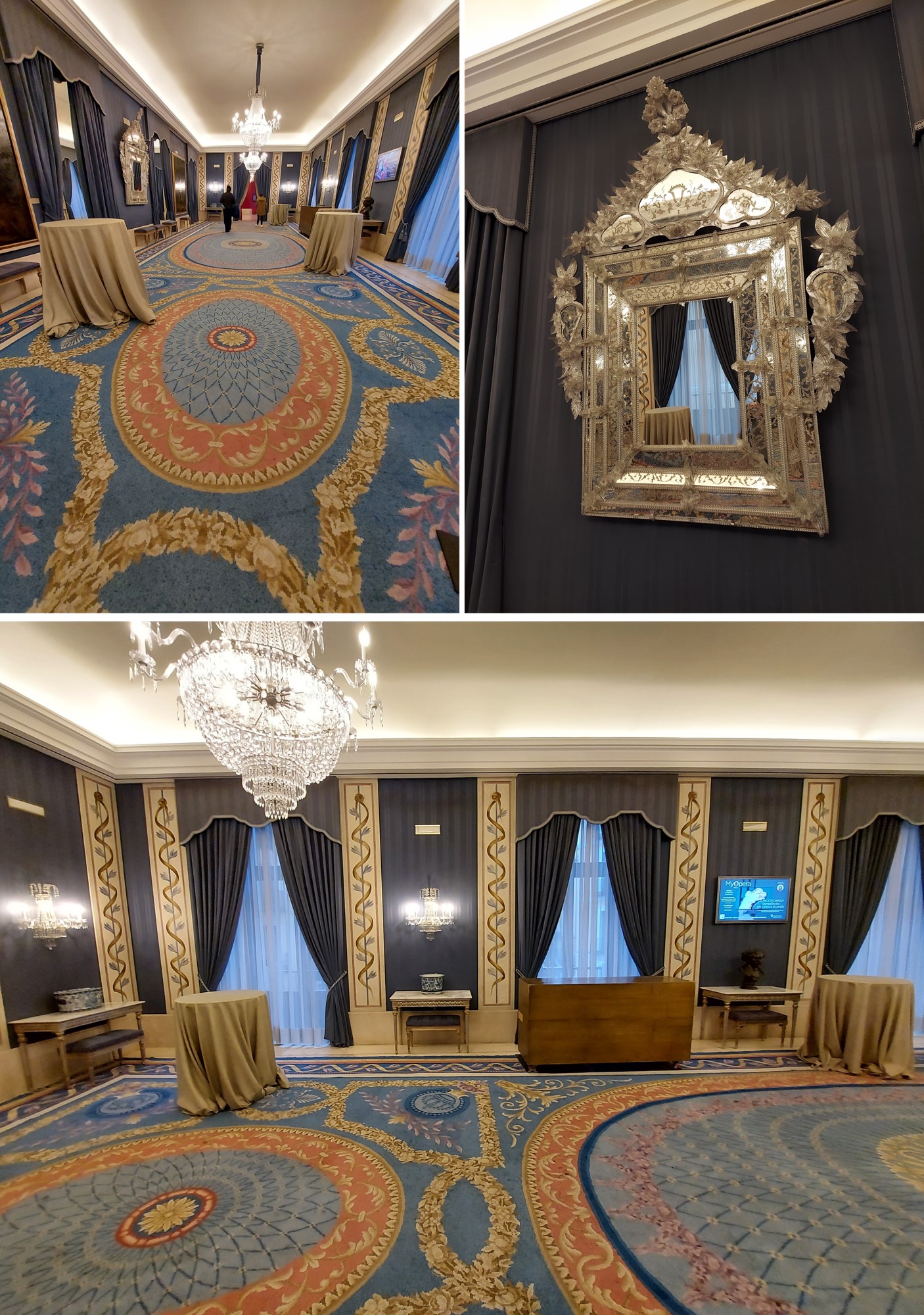
The set of reception rooms are located on the second floor and is one of the contributions added thanks to the reforms in 1997. These halls are open to all those attending the shows, following the tradition of the nineteenth century, as a meeting place. These halls are characterized by exhibiting outstanding works of art, a decoration starring carpets made exclusively for the theater, as well as exquisite lamps that add great elegance to these rooms. The first hall to be visited is the Carlos III, where blue tones dominate and a beautiful Venetian glass mirror immediately catches one’s eye.
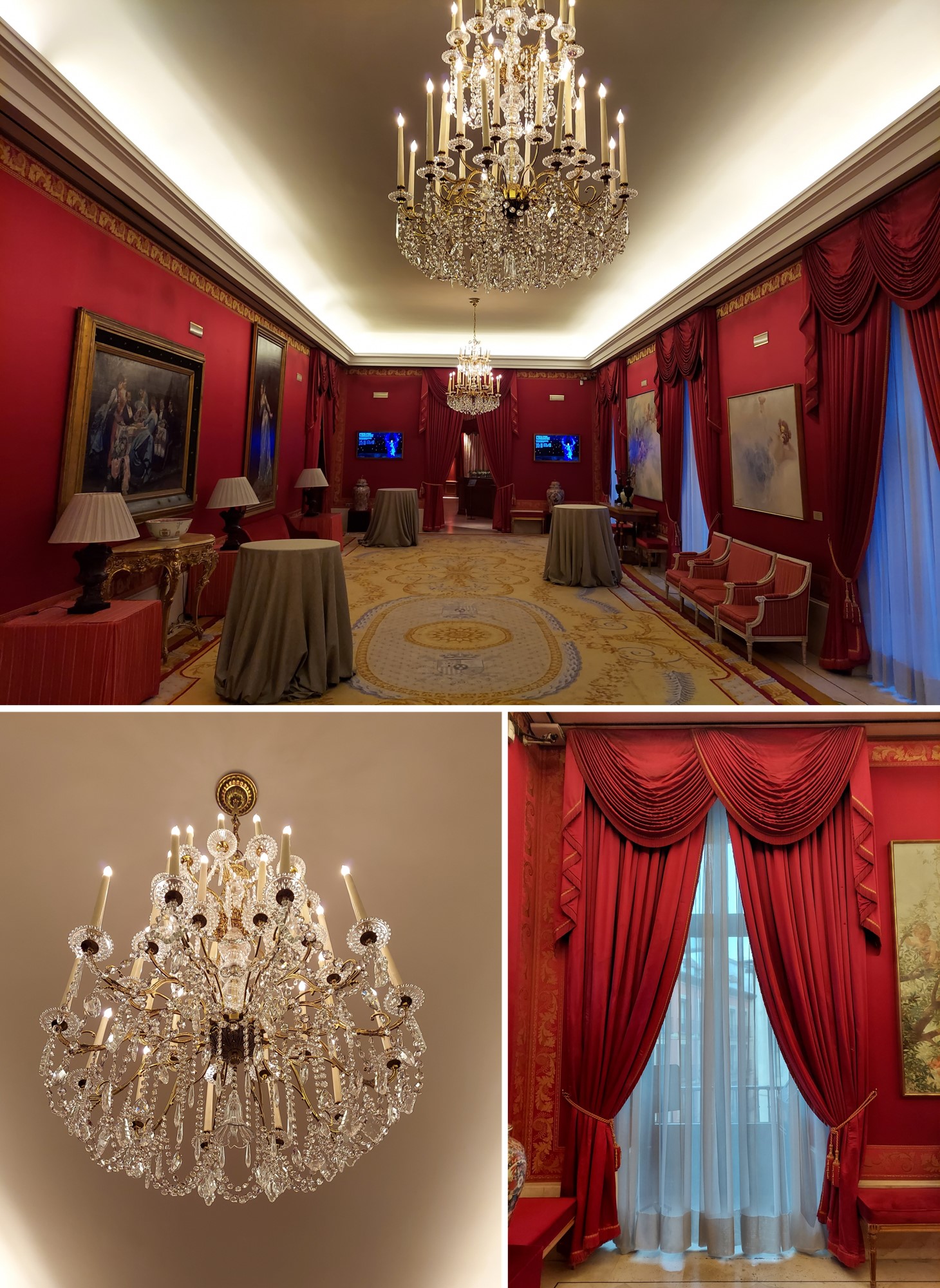
In the Vergara Hall, the decoration is so well achieved, where important works of art are integrated. Among them is an 18th century console table, as well as 19th century oil paintings belonging to the collection of the Prado Museum and kindly donated to the Royal Theater.
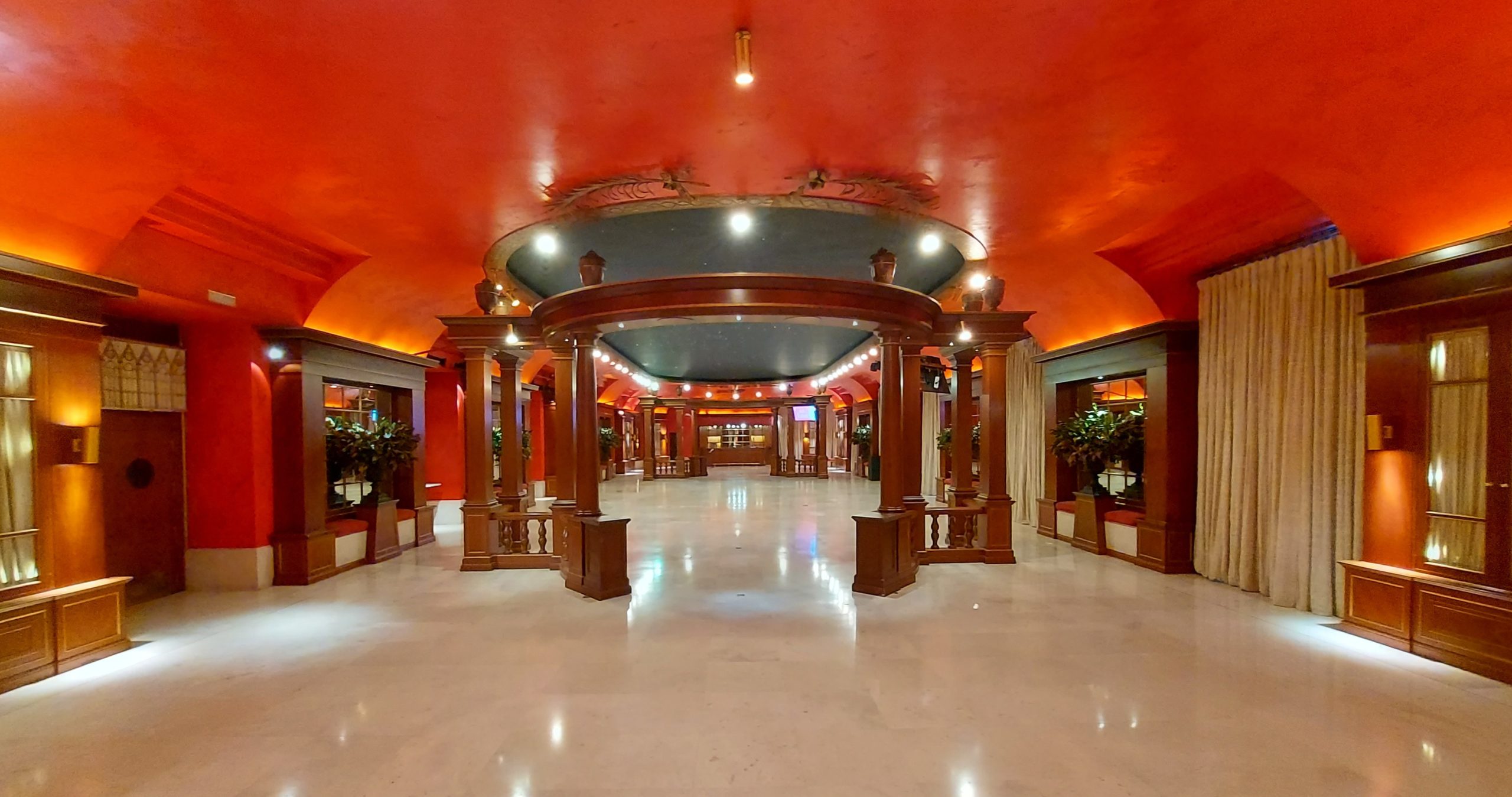
The Ballroom was one of the first rooms to be finished during the construction of the Royal Theater and its name clearly indicates its main purpose. It is a space measuring 500 square meters and in the first stage of this theater it gained great reputation as a place for masked balls.
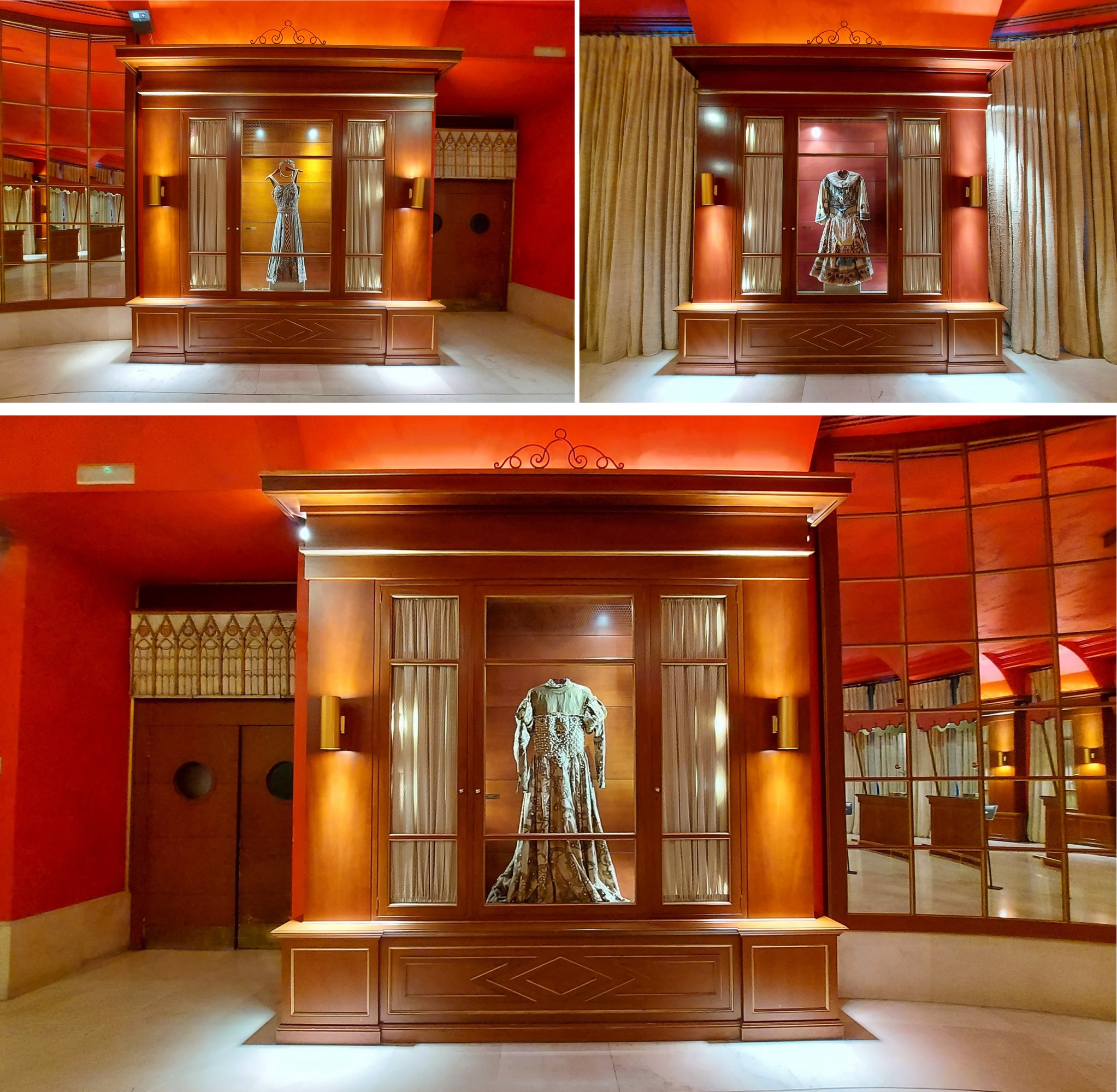
Its theatrical decoration and the parapets of the original boxes, rescued with the reforms of 1997, is what most distinguishes this hall. In addition, we find several of the costumes used in historical opera productions such as Verdi’s Aida or Donizetti’s Anna Bolena. In fact weekly, this space becomes the most surprising flamenco “tablao” in Madrid.
The most outstanding element of the Ballroom is the starry ceiling, where the Madrid sky is reproduced as it was on the night of its reopening, October 11, 1997. More than six hundred fiber optic terminals are responsible for representing the exact position of each star.
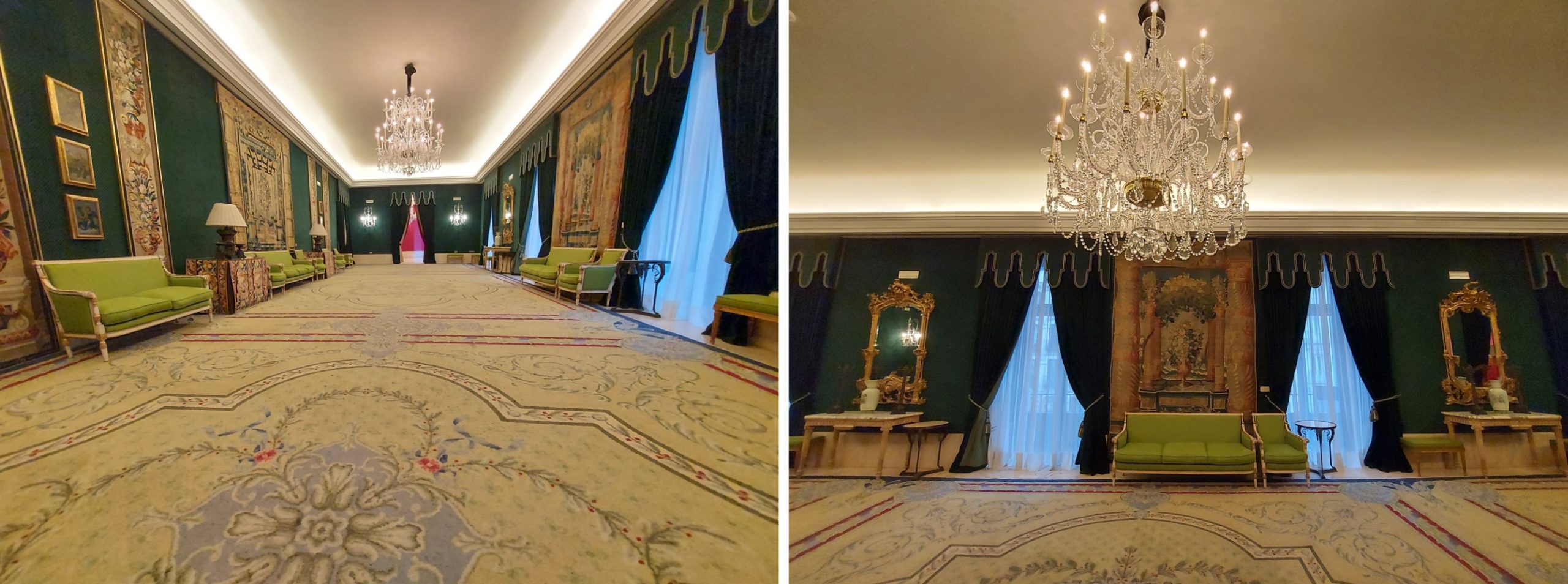
The Arrieta Hall is decorated in shades of green, enhanced by the chandelier that adorned the former Royal Box of the Theater before its renovation. In addition, the tapestries that adorn its walls calls one’s attention. The hall is named after the composer Emilio Arrieta, author of “Ildegonda”, the first work by a Spanish composer to be premiered in the theater in 1854.
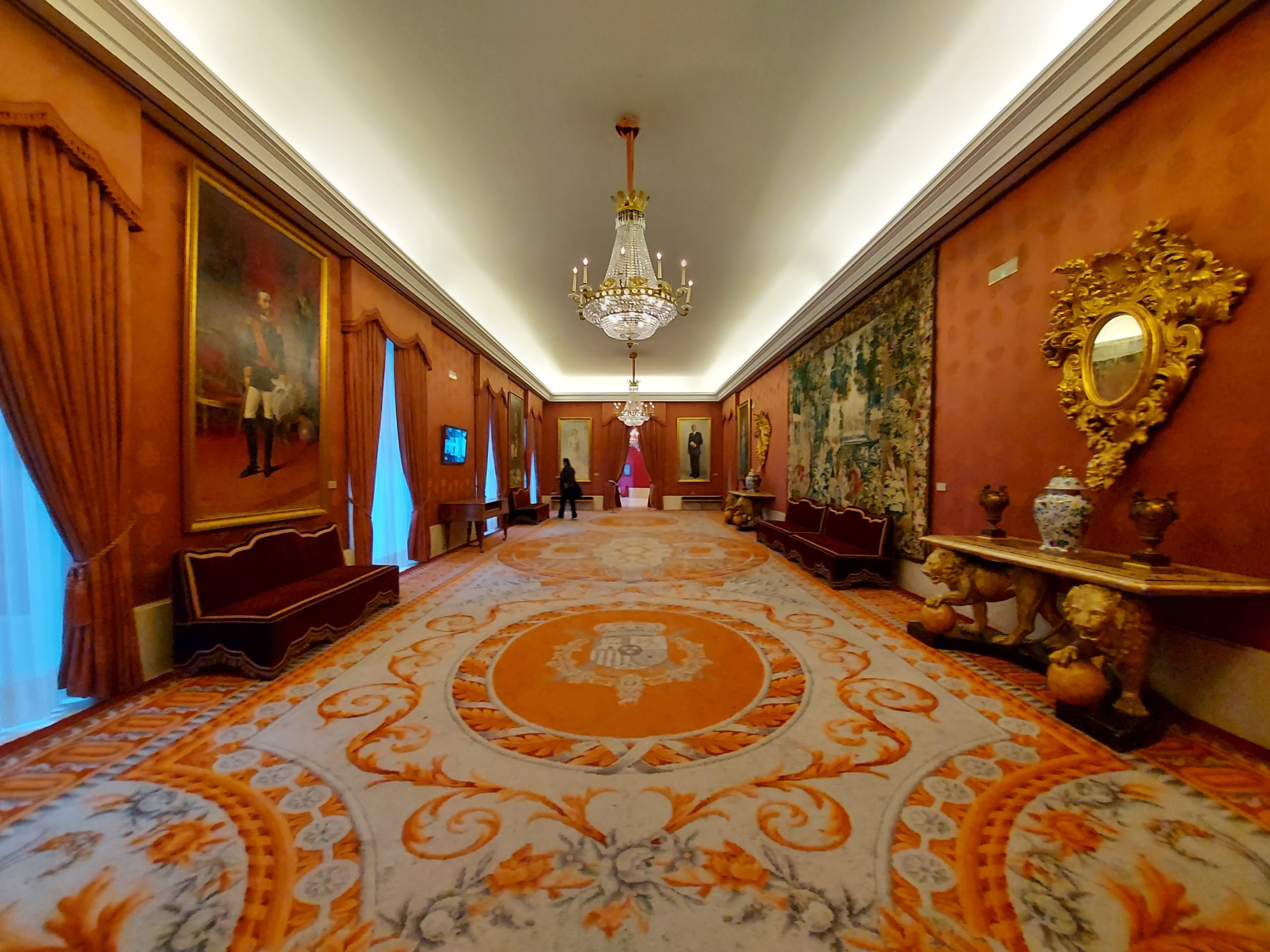
The main attractions of the Philip V Hall are the paintings depicting the kings linked to the history of the theater. Thus, we find the monarchs who started the theater, Ferdinand VII and his daughter Isabella II, accompanied by those who presided over its reinauguration, King Juan Carlos I and Queen Sofia of Greece.
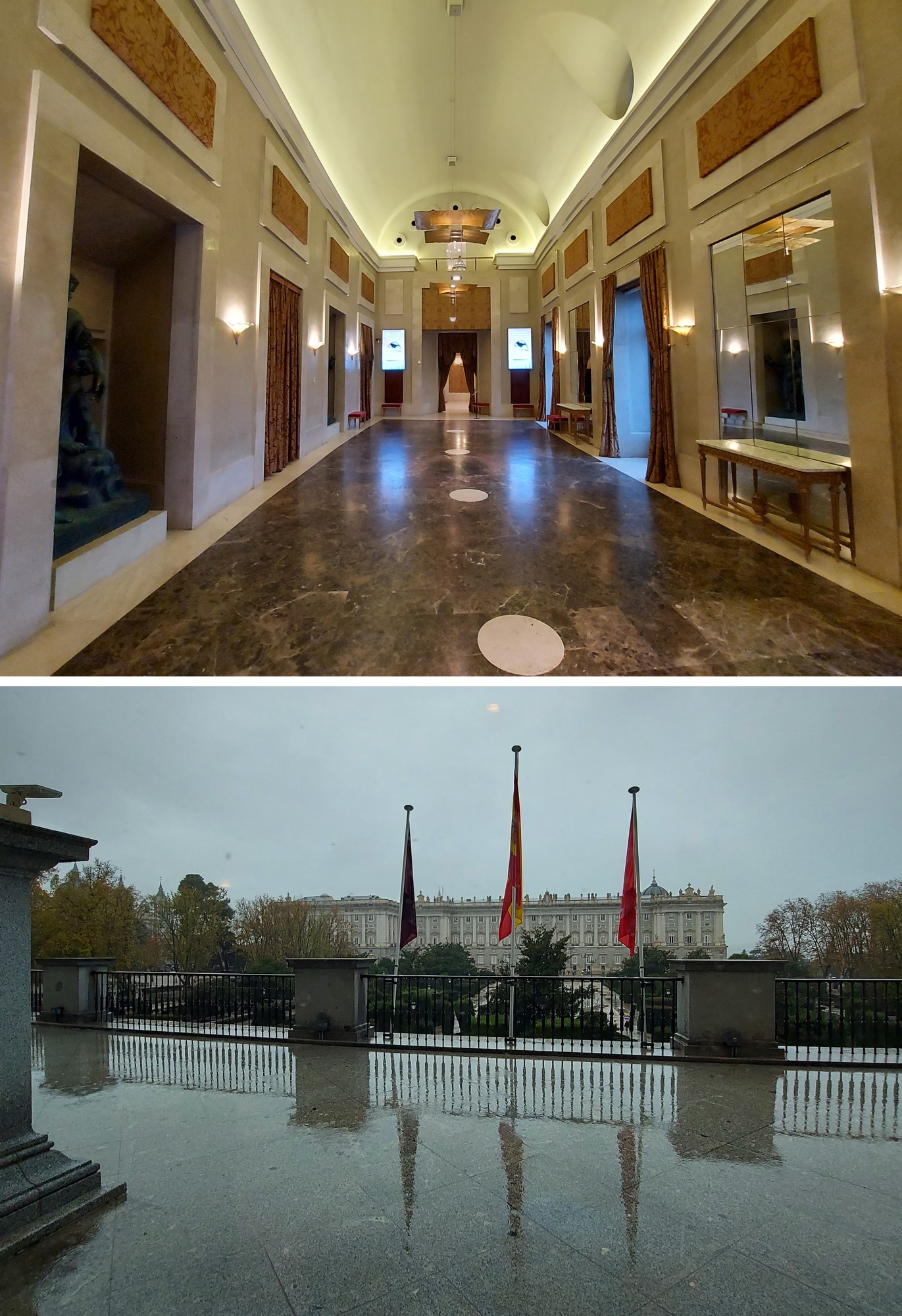
Located just above the main entrance of the Theater, is the “Falla” Hall. It is a rectangular space connected with a rotunda on each side and the best window to look out to contemplate the gardens of the Plaza of Orient and the Royal Palace. Originally, this room was reserved for the Royal Family and nowadays, it is the room that the Royal Theater dedicates for the exclusive use of its Patrons and Friends of the Royal Theater during the performances.
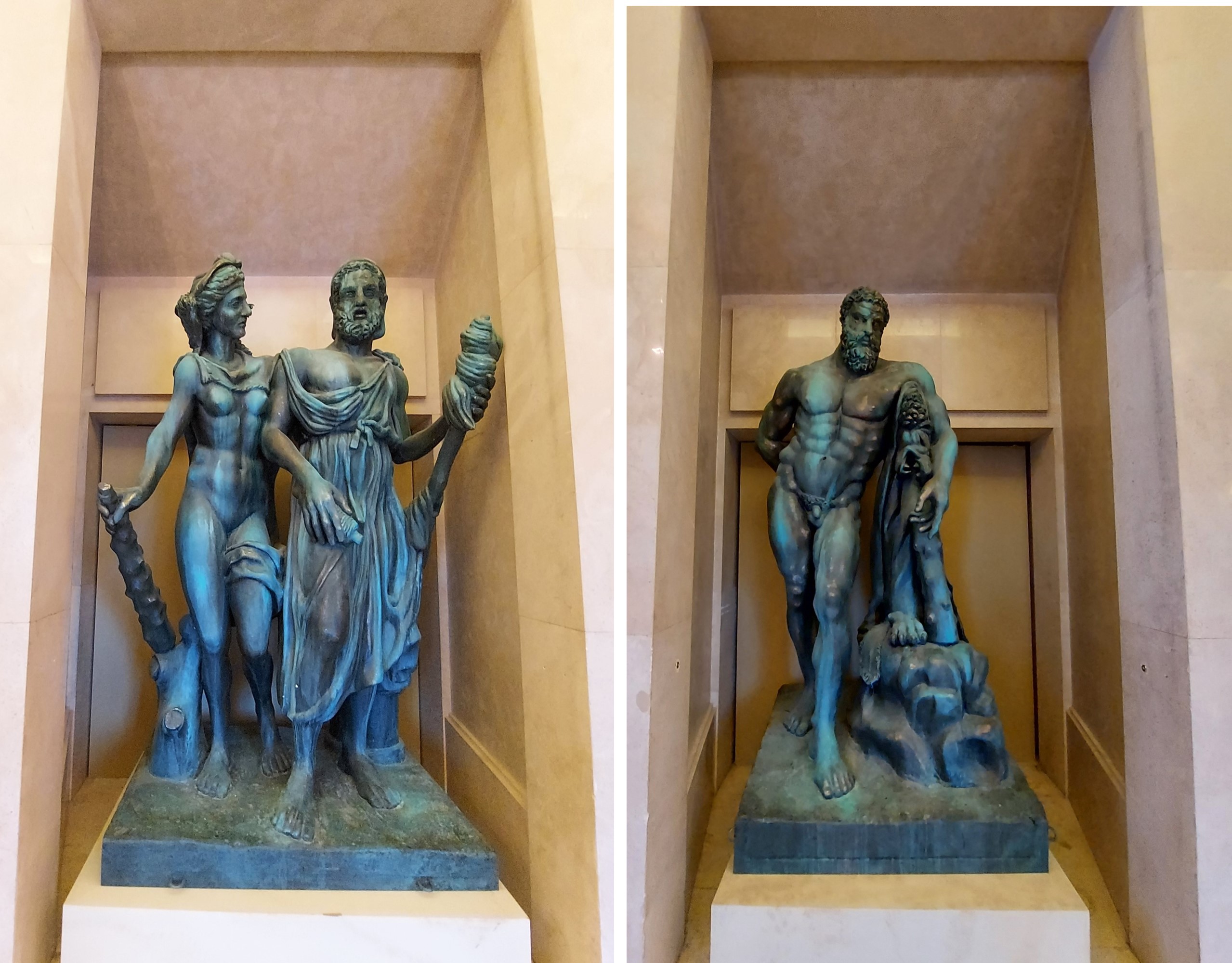
The Royal Theater wanted to pay tribute to Manuel de Falla by naming this space after him. Considered the most important representative of the so-called Generation of the Masters, in the opening of the Royal Theater in 1997, two works by the author from Cadiz were chosen for the gala performance.
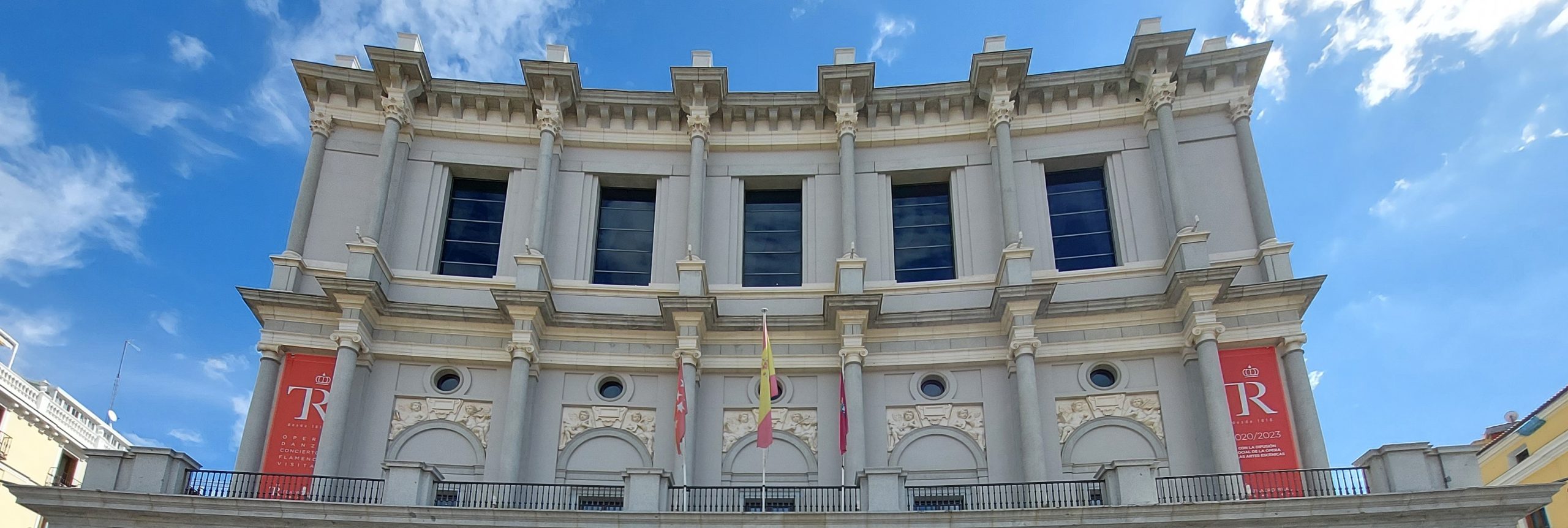
One of the most characteristic elements of the facade of the Royal Theater facing the Plaza of Orient is its terrace. A terrace that is open to those attending the functions that take place in spring and summer, and that allows them to enjoy one of the most beautiful sunsets in Madrid, framing the facade of the Royal Palace.
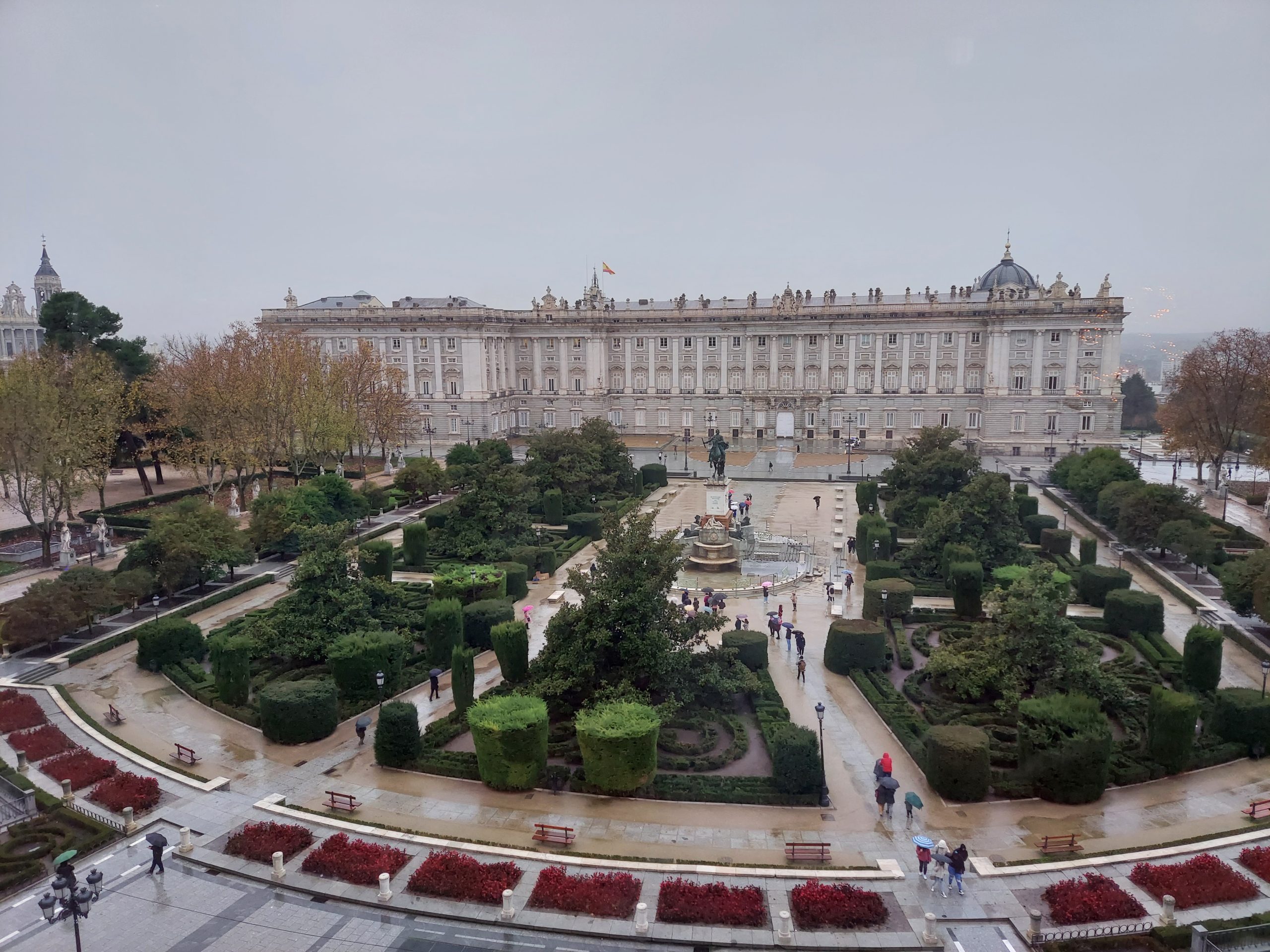
From the terrace you can also admire the design of the gardens of the Plaza of Orient, and especially the equestrian statue of Philip IV, the first in the world to have the horse stand on the hind legs. Once a year, the terrace and the Plaza of Orient become an extension of the theater stage, during the celebration of the opera week. In order to bring all audiences closer to the opera, large screens are installed for the public viewing of the Royal Theaters productions live and to the outdoors.
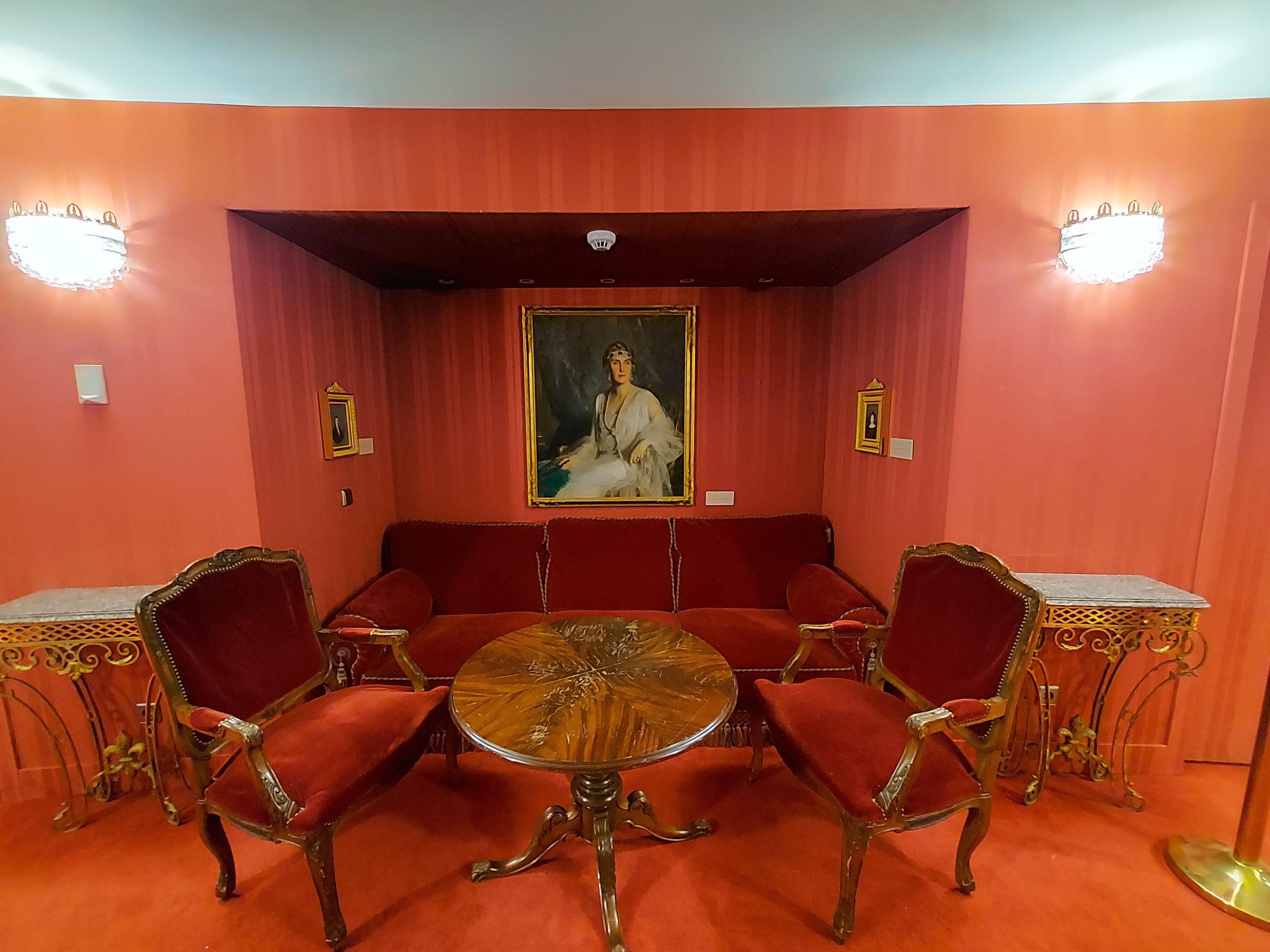
The Royal Box is a space decorated in reddish tones, which serves as a living room and is presided over by an original portrait of Queen Victoria Eugenia de Batterberg, wife of Alfonso XIII.
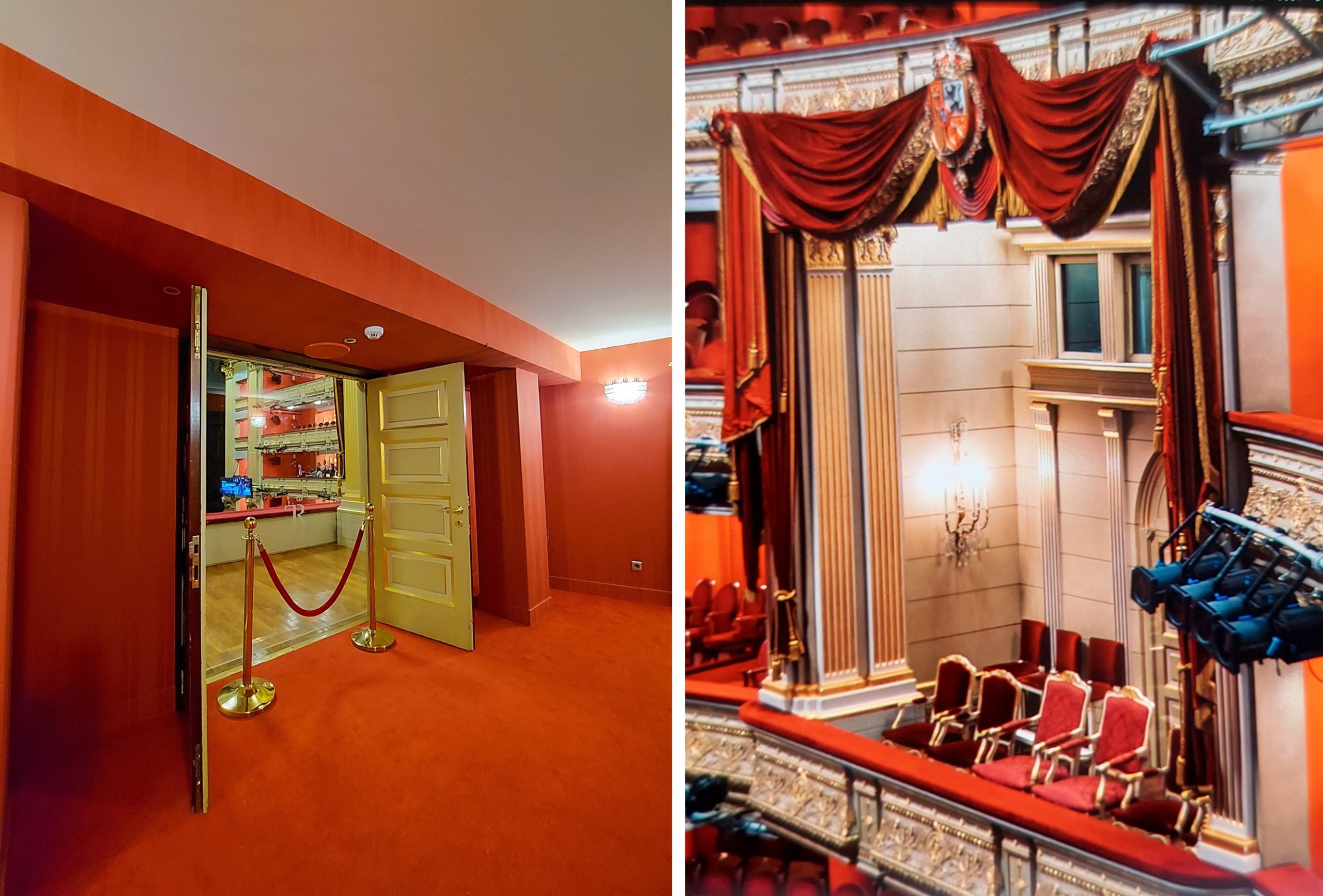
Nowadays, the presence of the royal family at performances at the Royal Theater is marked especially at the opening of the opera season, by attending the first performance. The box is triple width and double height in relation to the rest of the boxes that exist in the main hall, whose design has a classic horseshoe shape and reproduces the original with which the theater was inaugurated in 1850.
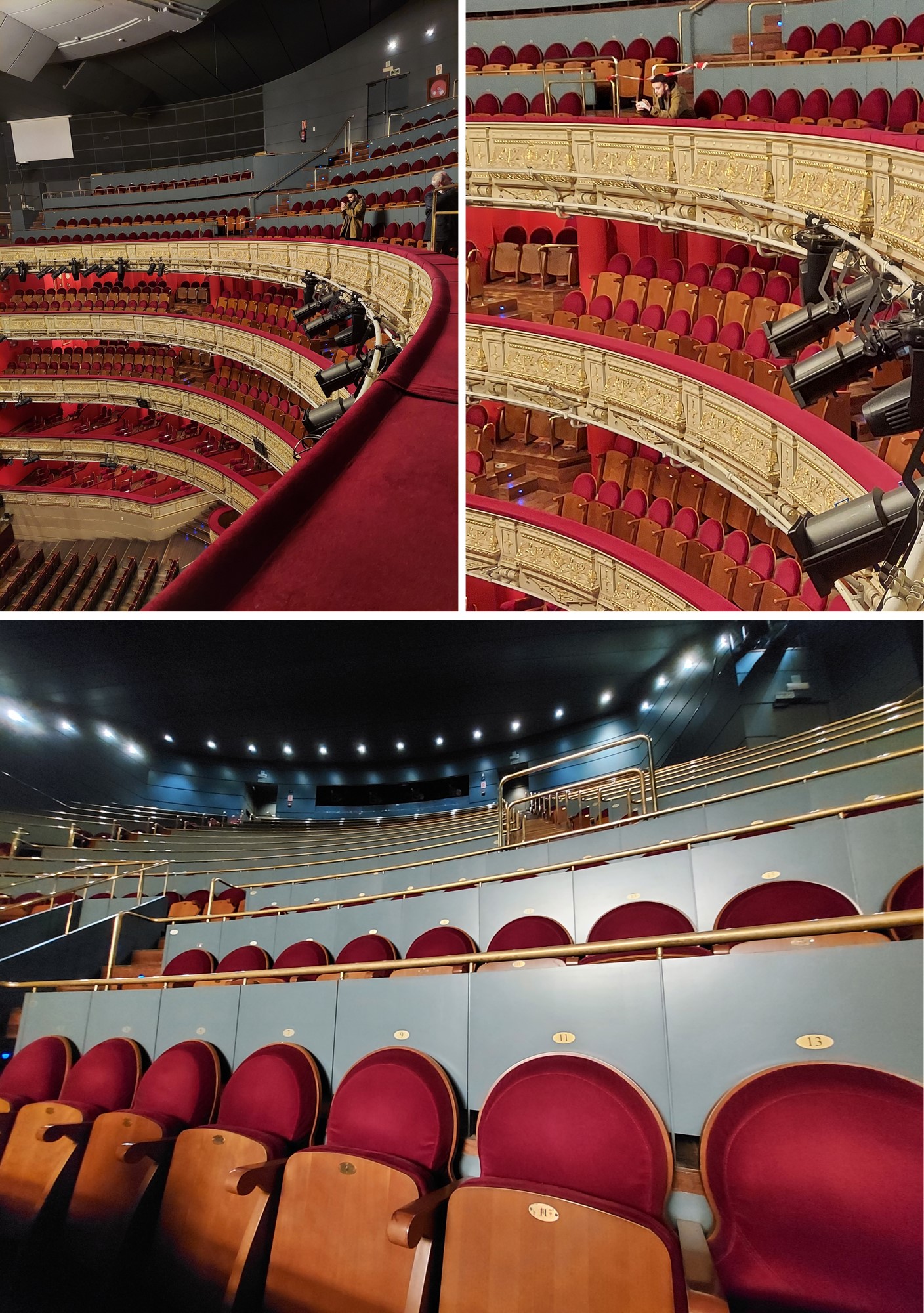
The auditorium of the Theater has a capacity of 1,836 seats, depending on the size of the orchestra pit, and within it is the stalls, the stalls area, the boxes of the mezzanine, main and amphitheater areas and the paradise area. This part of the hall, the highest, is the one that has increased the most in the reforms that have been made to the Theater. What has not changed, in the opinion of the experts, is the acoustics of the hall at any point, which is still considered one of the best in the world.
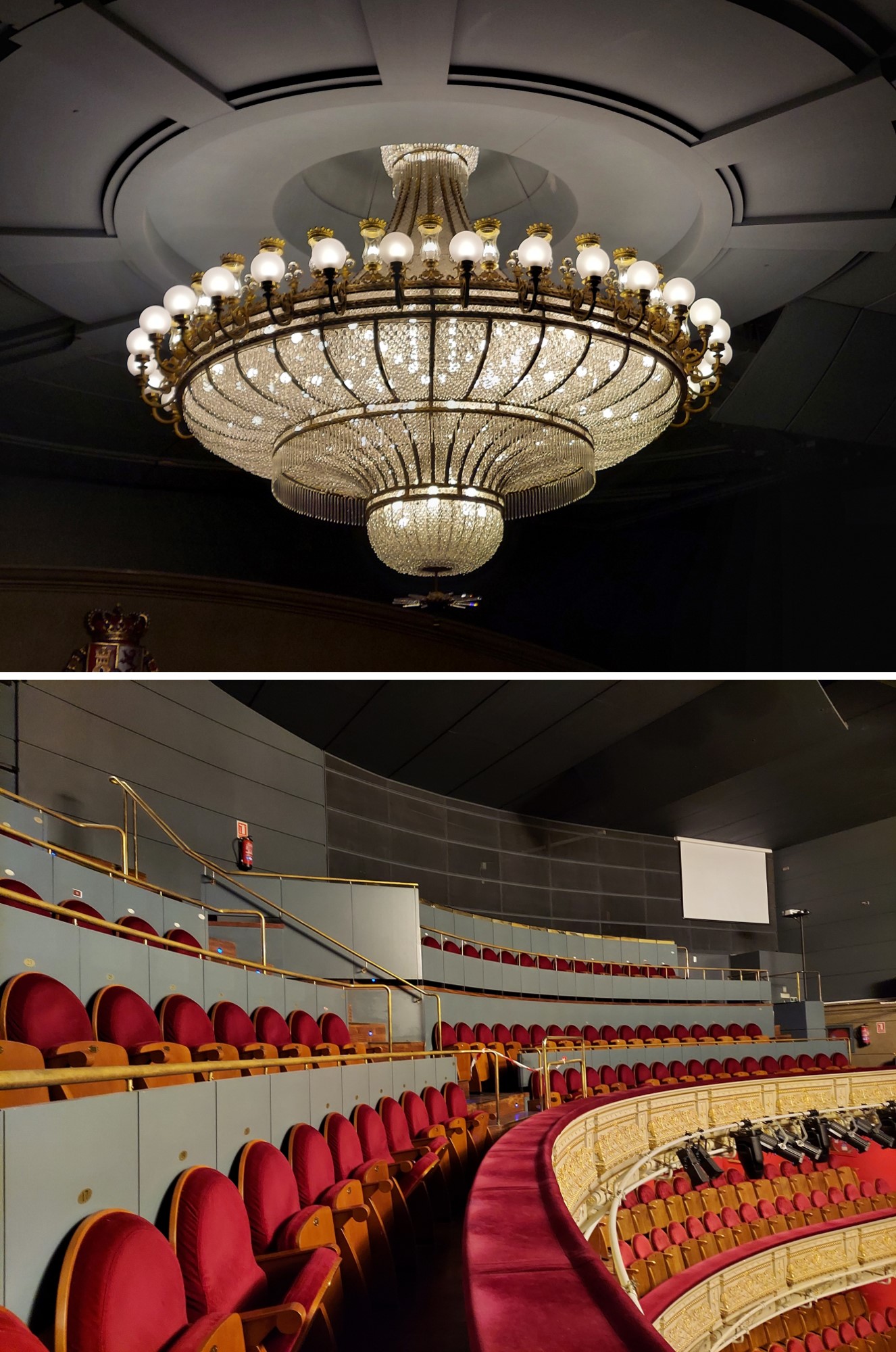
The decoration of the hall has retained the tradition of red and gold as the predominant colors, as well as the prominence of the large central bronze and rock crystal chandelier. Built in the Royal Factory of La Granja, this lamp has 300 bulbs and weighs 2,400 kilos (over 2 tons).
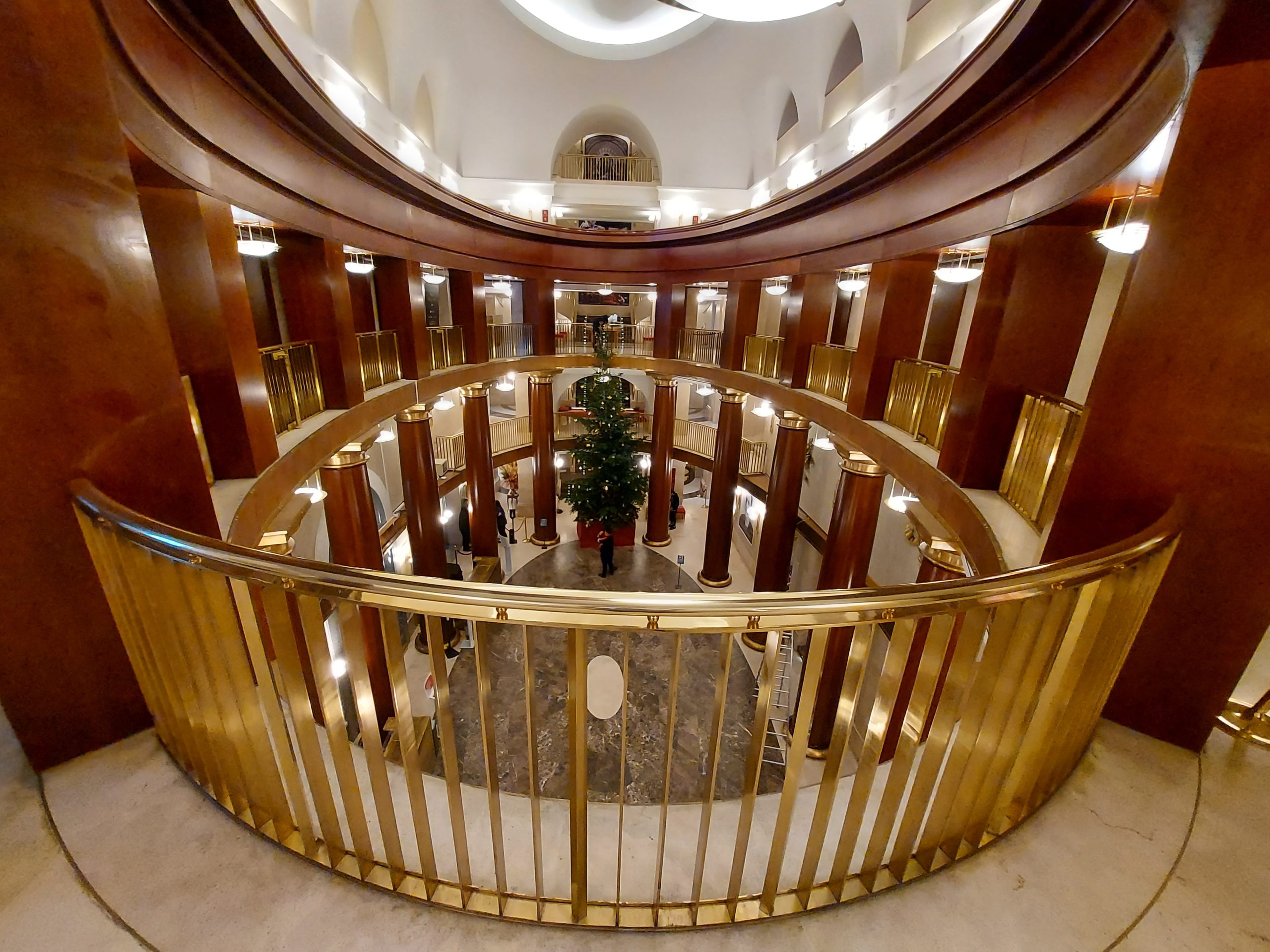
In the words of the philosopher Rousseau: “The different ingredients of opera are poetry, music and scenery. Poetry speaks to our spirit, music to our ears, painting to our eyes, and all together contribute to move our heart.” That is the Royal Theater of Madrid.
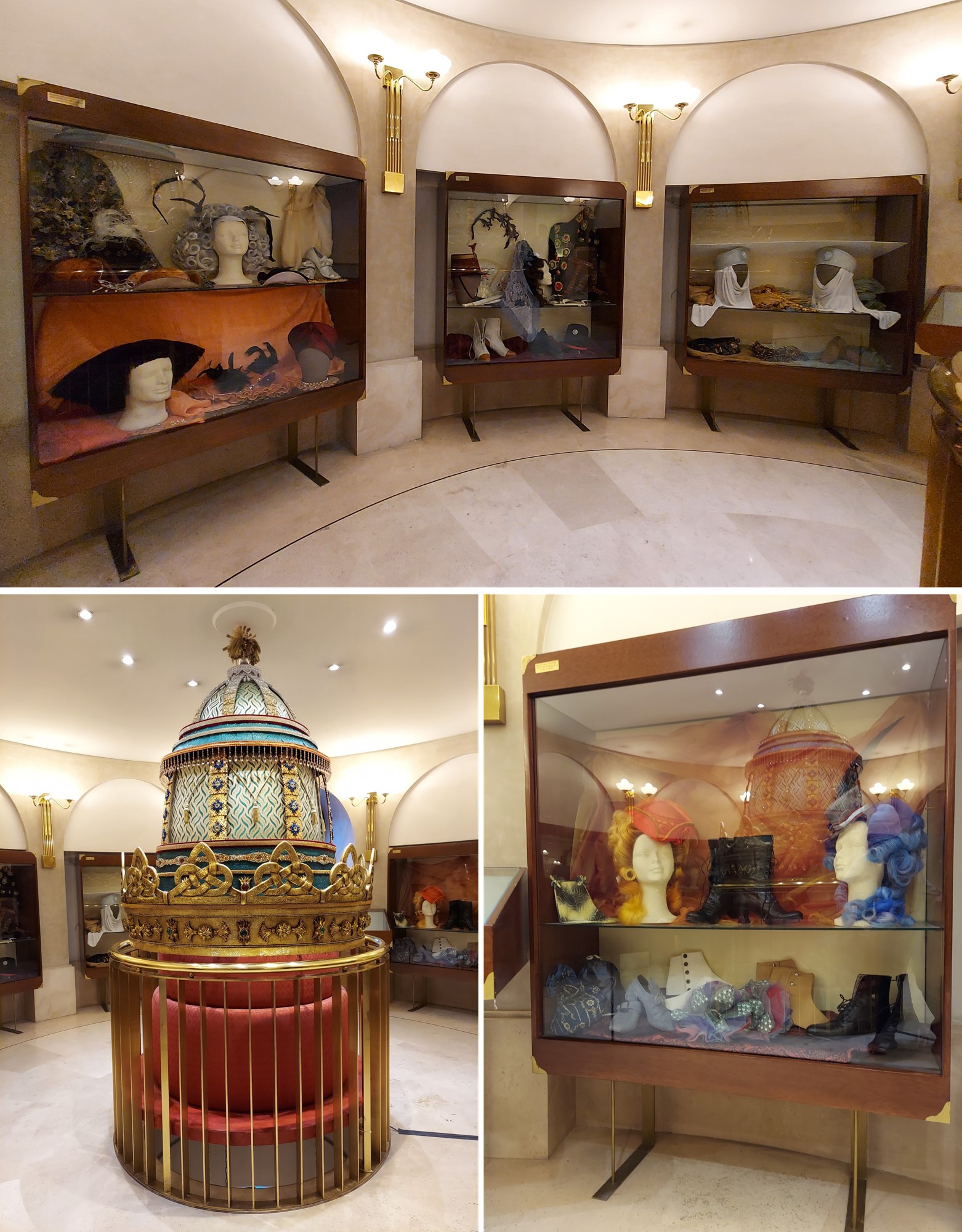
***************
Resources:
“Guide Visit to the Teatro Real”.
https://es.wikipedia.org/wiki/Teatro_Real_(Madrid)
https://www.esmadrid.com/informacion-turistica/teatro-real
https://www.miradormadrid.com/teatro-real-de-madrid/
